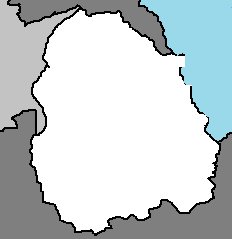Vorrica
Republic of Vorrica and Hae | |
|---|---|
|
Flag | |
 | |
| Capital | Argyttos |
| Largest city | Viceria |
| Government | Unitary parliamentary constitutional republic |
| Danio Beretta | |
| Lalit Saraogi | |
| Edmund Corkill | |
| Cecilia Hane | |
| Diarmid More | |
| Establishment | |
• Bariza Empire | 1331 |
• Socialist Federal Republic of Cyruda | January 5th, 1955 |
• Independence and Republic of Vorrica | March 22nd, 1988 |
| Population | |
• 2020 estimate | 21,382,000 |
| GDP (PPP) | estimate |
• Total | Z$117.928 billion |
| GDP (nominal) | estimate |
• Total | Z$63.172 billion |
| Gini | 49.7 high |
| HDI | 0.651 medium |
| Currency | vorris |
| Date format | mm-dd-yyyy |
The Republic of Vorrica and Hae, otherwise referred to as Vorrica, is a nation in South Adula bordered by Alecburgh to the north, Cyruda to the west, and the Avisca Sea and Cantalle Ocean to the east. Its capital is Argyttos and its largest city is Viceria. The country has a population of 21,382,000. The coast and inland region of the country has a moderate continental climate with hot summers and cold, snowy winters. In the central and western regions of the country, the geography is mountainous, in the northwest it is moderately hilly, and in the northeast it is predominantly flat.
The area that is now Vorrica has been inhabited by human beings since at least the Upper Paleolithic, but evidence suggests that during the Neolithic age, permanent human settlements were established, including those that belonged to the Bazira and Cyrdu cultures. In the 12th century the separate kingdoms of Vorrica and Hae joined into the Cinate of Cyruda, which evolved into the Kingdom of Cyruda in the 14th century, after which it was annexed into the Bazira Empire, under whose rule it remained from the mid-15th to the late 18th centuries. The Bazira, along with their trading networks through Qolaysia and Emmiria, brought Islam and Christianity to the region, and altered much of the cultural and social outlook of the country as Christianity overtook Islam as the predominent religion. After the World War, Vorrica and Hae were granted republic status along the newly formed Socialist Federal Republic of Cyruda. Vorrica and Hae achieved full independence in 1988, which preceeded the dissolution of the Socialist government in Cyruda in 1992.
Today, the country is home to three main ethnic groups, designated “constituent peoples” in the country’s constitution. The Vorri are the largest group of the three, the Hae are the second-largest, and the Riccai are the third-largest. Vorrica and Hae has a bicameral legislature and three political parties made up of one member from each of the three major ethnic groups. However, the central government's power is highly limited, as the country is largely decentralized. The country is led by a Chancellor, currently Danio Beretta. Vorrica and Hae is a developing country and ranks moderately in human development. Its economy is dominated by industry and agriculture, followed by tourism and the service sector. Tourism has increased significantly in recent years. The country has a social-security and universal-healthcare system, and primary- and secondary-level education is tuition-free. The country is a member of the Coalition of Crown Albatross, SEIAA, and the CTO.

